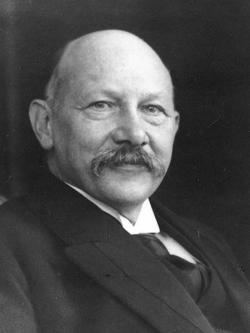
On 8 April 1911, Professor Heike Kamerlingh Onnes and his collaborators, Cornelis Dorsman, Gerrit Jan Flim, and Gilles Holst, discovered superconductivity. They observed that the resistance of mercury approached "practically zero" as its temperature was lowered to 3 kelvins. Today, superconductivity makes many electrical technologies possible, including Magnetic Resonance Imaging (MRI) and high-energy particle accelerators.
Superconducting offers a class of electrical conducting materials which exhibit (near) zero electrical loss and a number of quantum mechanical properties which can result in many novel and unique electrical and electronic devices and systems.
When a sample is in the superconducting state, which for all known superconducting elements, compounds and alloys occur at temperatures below about minus 100 C, samples can carry very large electric currents without any (or, at least, very little) Joule heating. Thus, one can build electrical machinery, large electromagnets and high current carrying power transmission cables that can operate very efficiently without any dissipation; the only energy required by these superconducting devices and systems is for the refrigeration required to maintain the device at temperatures below its critical (superconducting) transition temperature. In practice, large superconducting components, devices and systems can have overall electrical power requirements which can be two to five orders of magnitude smaller than corresponding devices and systems built using conventional resistive (and hence, dissipative) technologies.
Superconducting magnets and magnetic systems have been the enabling technology in a number of medical diagnostic applications, such as Magnetic Resonance Imaging (MRI), as well as most of the recent and future High Energy Physics particle accelerators such at the Large Hadron Collider at CERN (Geneva, Switzerland). The technology is also currently under evaluation for use in making the national electric power grids more energetically efficient by enabling improved power transmission, low loss power transformers and fault current limiters, etc.
The discovery of the phenomena of superconductivity at the University of Leiden, The Netherlands, by Prof. Heike Kamerlingh Onnes and his colleagues in 1911 was a totally unexpected result, which opened a completely new area of research in the science and technology of electrical conduction in materials and in the development of energy efficient electrical and electronic devices and systems. Prof. H. Kamerlingh Onnes and his collaborators at the University of Leiden were in a unique position as helium had first been liquefied at the University of Leiden in 1908, for which Prof, Kamerlingh Onnes received the Nobel Prize in Physics in 1913.
During the 100 years since its discovery, the phenomena of “supraconductivity” (or“superconductivity” as it was later known) has been observed in more than 10,000 elements, compounds and alloys, but, in all instances, the phenomena was always only observed at temperatures well below room temperature. The highest know superconducting transition temperatures found to date, are all below about 170 K (or about minus 100 C.). Thus a scientific study of the electrical behavior of pure metals at low temperatures by Prof. H. Kamerlingh Onnes and his colleagues lead to the totally unexpected discovery of the phenomena of superconductivity on 8 April 1911 in Room 1 the Physical Laboratory of the University of Leiden in the Netherlands.


